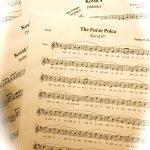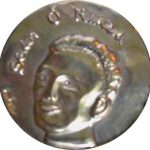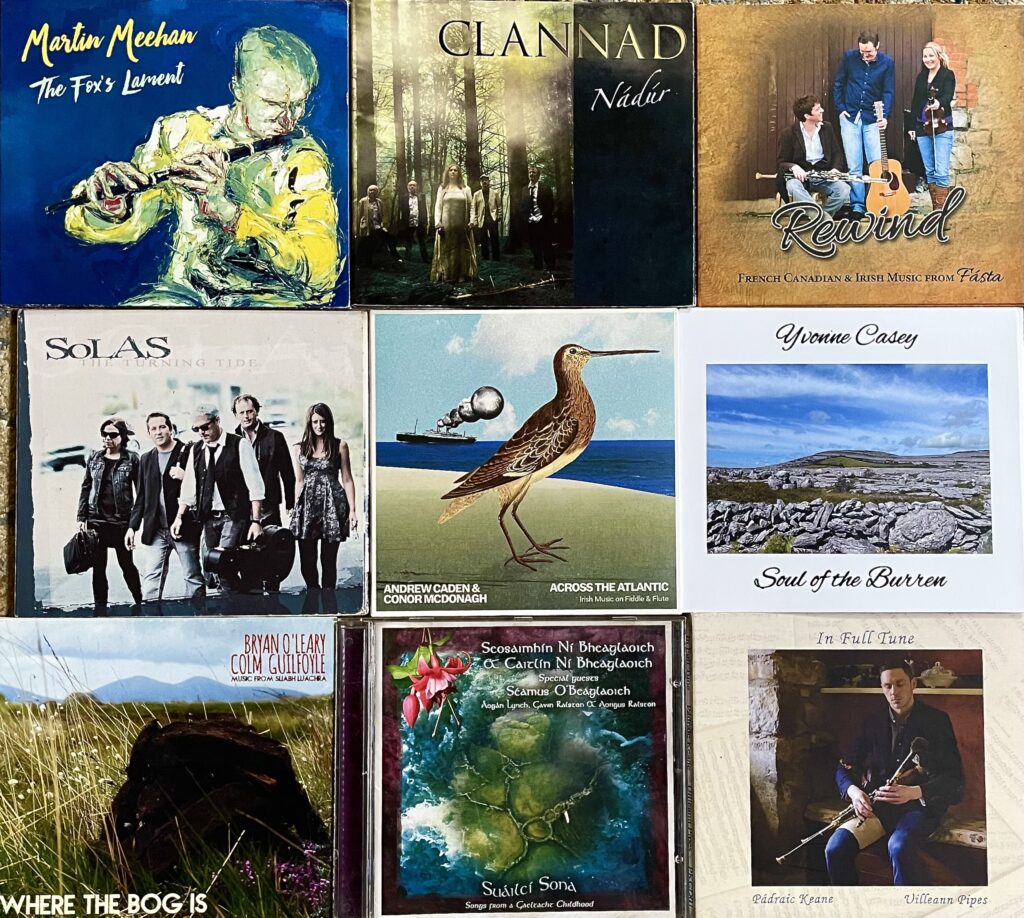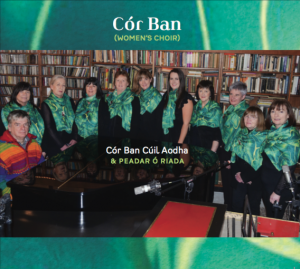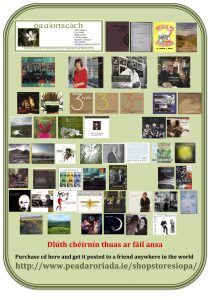Mise Éire (English)
| July 19, 2011 | Posted by peadar under Scríbhneoireacht / Writing |
Comments off
|
(Nótaí a chuireas I dtreo do chludach dluth dhiosca Mise Éire arna ath-fhoilsiú 2007
Sleeve notes I put together for the re release of the music for the film Mise Éire on cd 2007)
There are many forms of love and the love of one's nation is most potent. This is what sparked the creativity of my father, Seán Ó Riada and presented the Irish Nation with a sound of their own culture they never had heard before. It was electrifying. As a child I did not realize that this particular piece of work was going to have such an effect. It was still the same process. Walking the floor at night – up and down - back and across, and this constant whistling. This whistling was not performed with tone in mind, but rather, a more wind blowing kind of sound. I think he picked up the habit from his mother. She would spend the day jobbing around the house and blowing airs and melodies in front of her wherever she went.
Many of these same melodies appeared in her son’s score for the film Mise Éire. The version of Roisín Dubh is actually based on the melody common in Muscraighe and sung to the words of “Cois an Ghaorthaigh”. But I notice that many of my grand father’s favourites found their way into the score also – melodies such as “Kelly the boy from Killane”.
I remember bits of score manuscript scattered on the kitchen table in the morning. There was always a good ruler with a fine straight edge and, indeed I remember getting into some trouble because I had borrowed it and spent some happy moments with it smashing away at imaginary foes and in mortal danger of denting the fine edge. This edge was needed to draw the barlines in the score. Later in life I have found myself in the same near apoplectic rage when I discovered that my own ruler had been ‘borrowed’ and used for some other damaging purpose. A straight edge on a clean ruler is a very important piece of a composer’s equipment. I also remember that he would use a blue or black biro and these were also very desirable toys from a child’s point of view. There would be blue murder if they were mislaid or lost.
In studying for his Music degree, Seán was trained by Professor Aloys Fleischman in UCC. Professor Fleischman was of the old European school and demanded rigour from his students with regard to harmony, counterpoint and orchestration. He also looked for neatness in a score. Seán’s scores show this training. He had a very neat hand and all the more because he never composed in drafts. The score was always both the first written and the final draft. As he was writing with biro or ink, if the unusual happened and he made a mistake, he would cross out the whole bar with a scribble. Thus one can follow his thought and composing method from conception to finished score by just looking at his final and only manuscript. This is unusual amongst composers. There are no scrapes of paper with jottings or trial settings. It has its downside as if you make a bags of two or three consecutive bars you may have a full page of a score scribbled out. This rarely happened in his case though. This process is a result of the way that the composition took place. I have found myself following the same pattern and I have found that, because you hear the score in your ear, you have little time to write it down or you will lose the music. I find that you tend to work maybe four of six bars across the score and fill in the orchestra parts vertically at the same time. It is vital that you write neatly when working in this style. Other composers usually write out roughly first and then produce a final clean score after many trials and drafts.
The bits of score manuscript on the morning table would be as a result of a shortage of blank score sheets and Seán would raid other score or manuscript to tear out the spare blank pages at their end. When you are in a fever or on the high of creation and are rushing to put down on paper what you hear in your ear, you cannot wait until the shops open so that you can purchase new sheets. Of course a deadline for delivery, which may have already passed, is another spur to hasten the finishing of a score. Seán was always late. That I also understand.
But there is where the comparative notes end for me. Because, when looking at his work, he genius and talent still shocks me. Of course there is the emotional elation wrought by the music but it is in studying the detail of how achieved this that the true talent is seen. This is particularly evident in the phrasing of his melodies. Remember that he was working in unchartered territory. There were other Irish composers before him of course but they ploughed a different furrow. It seems much easier now that he has blazed a trail for modern Irish composers who wish to work from the rich seam of their own indigeounous culture. The other modern implement that has arrived since my father died is the computer and the wonderful range of possibilities it provides. There is no fear one may run out of manuscript nowadays. It also allows you to play back instantly what you have just composed. This may be a double-edged sword i think. It tends to follow the same process that my father poured scorn on – namely the use of the piano to compose. The problem with this particular method is that it tends to induce the composer to produce short term gratifying sounds to the detriment of the overall score. Form or shape is also affected. The ear produces less and the machine produces more options. This turns the process into a series of choices rather then that headlong rush of music that arrives from behind the “black door of the mind”.
Mister Ó Riada certainly rode and drove those rushes. He would be excited. He would be energetic. In later years he would use other composers to calm him down – mainly Mozart or Mahler. At the time I thought this was the way all composers worked. It was only when I grew up and started dabbling in that world that I realized what all the pacing and whistling was for. Indeed I got myself into trouble over Mahler as well as when I was involved in some piece of work for some days my mother finally exploded at me to the effect that it was bad enough when Seán was listening to that bloody piece of music constantly, but why would she have to put up with it from me. I was stunned and more so when I found out that that was a piece he used frequently for the same purpose. The piece in question at that time was Mahler’s Das Lied Von Der Erde.
And there I believe lies one of the reasons for one of Seán’s great gifts – the gift of great orchestration. To be able to place music at a certain pitch on a combination of instruments that provides a unique sound. Mise Éire has many of those moments. Like Mahler, there are full orchestral moments but there are also many small groupings and unusual combinations. His use of percussion with say with a solo instrument or the ripple of a little motif through the orchestra, each instrument echoing it up in pitch but because of where it is placed on each instrument, the echoing effect is seamless.
Finally, my impression is that it was love of his nation that created this emotional maelstrom. This love came from his background. His father was a gentle and very Christian man who spent his life in the guards. His mother was a very energetic woman who steamed through life regardless of difficulty. She had been a nurse during the revolution and was closely involved in helping the revolutionaries during the time of the “Troubles”. The Ó Riada, or Reidy as it was known then; household was full of Irish music. Both his parents were traditional Irish musicians and sang songs and danced unabashedly at home if the moment suited them. This I also witnessed when I lived them in later years while attending college. This cultural milieu and background combined with the genius of Seán Ó Riada is what made the sound of Mise Éire – I am the Ireland. Saoirse and An Tine bheo are merely extra chapters in the same book.

